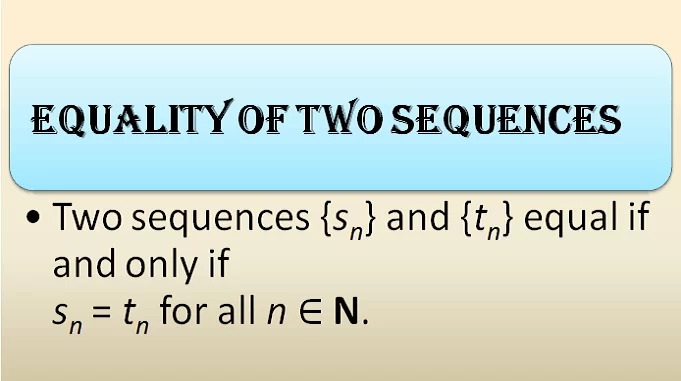
Range of Sequence in Mathematics:
The range of a sequence is made up of the sequence’s terms. The set of all distinct (different) terms of a sequence is called its range. We write all of the sequence’s elements in the range, but none of them is repeated. The range of sequence {} = the set {
}, where
if
.
Example 1: The range of the sequence {} is,
Range of ,
which is a finite set and the two-element set.
Example 2: The range of the constant sequence {} is,
Range of ,
which is a finite and singleton set.
Example 3: The range of the sequence {} is,
Range of ,
which is an infinite set.
Example 4: The range of the sequence {} is,
= ,
which is an infinite set.
अनुक्रम का परिसर (Range of Sequence in Mathematics in Hindi):
अनुक्रम का परिसर अनुक्रम के पदों से बना है। किसी अनुक्रम के सभी भिन्न (अलग-अलग) पदों के समुच्चय को उसका परिसर कहा जाता है। हम परिसर में अनुक्रम के सभी अवयवों को लिखते है , लेकिन उन अवयवों में से कोई भी अवयव दोहराया नहीं जाता है। अनुक्रम {} का परिसर, समुच्चय {
} है, जहाँ
यदि
।
उदाहरण 1:
अनुक्रम {} का परिसर {
} है, जो एक परिमित समुच्चय (finite set) और दो अवयवों वाला समुच्चय है।
उदाहरण 2:
अचर अनुक्रम (constant sequence) {} का परिसर {
} है, जो एक परिमित और एकल समुच्चय (singleton set) है।
उदाहरण 3:
अनुक्रम {} का परिसर, {
} = {
} है, जो एक अनंत या अपरिमित समुच्चय (infinite set) है।
उदाहरण 4:
अनुक्रम {} का परिसर {
}, है, जो एक अनंत या अपरिमित समुच्चय (infinite set) है।
(Source – Various books from the college library)
Copyrighted Material © 2019 - 2024 Prinsli.com - All rights reserved
All content on this website is copyrighted. It is prohibited to copy, publish or distribute the content and images of this website through any website, book, newspaper, software, videos, YouTube Channel or any other medium without written permission. You are not authorized to alter, obscure or remove any proprietary information, copyright or logo from this Website in any way. If any of these rules are violated, it will be strongly protested and legal action will be taken.


Be the first to comment